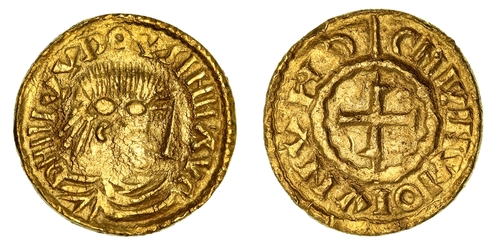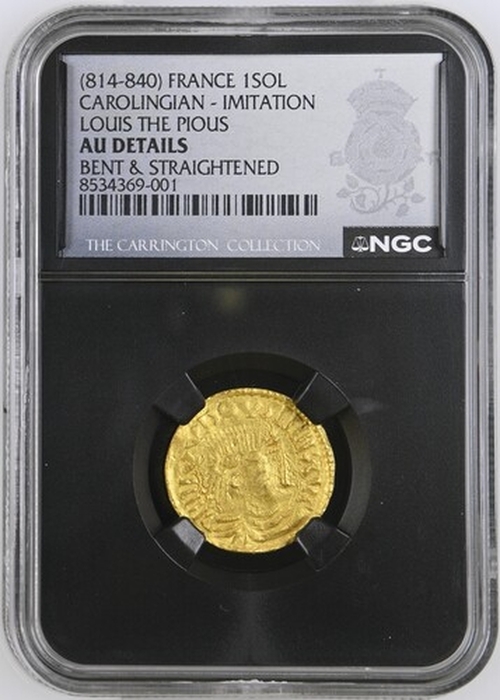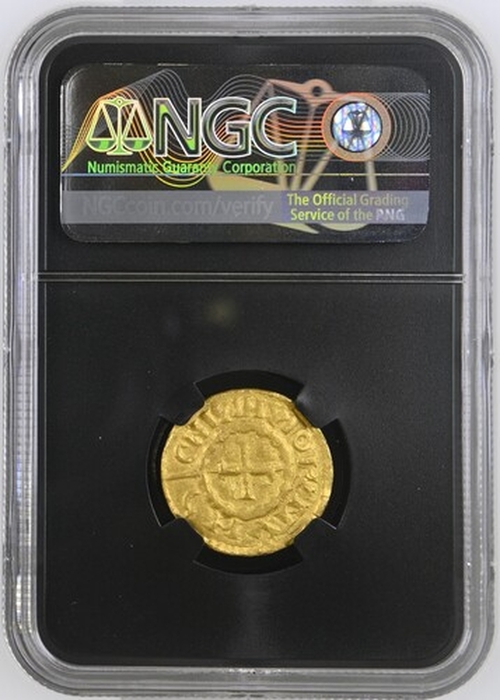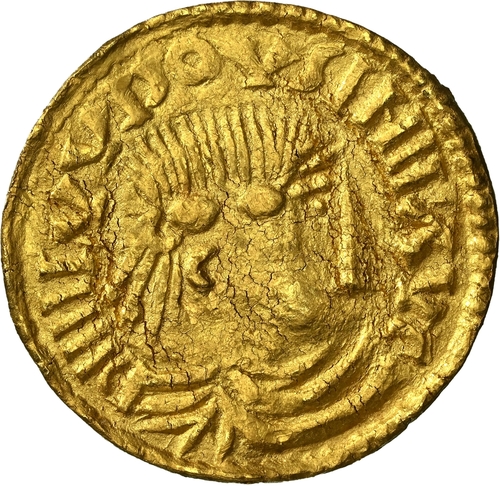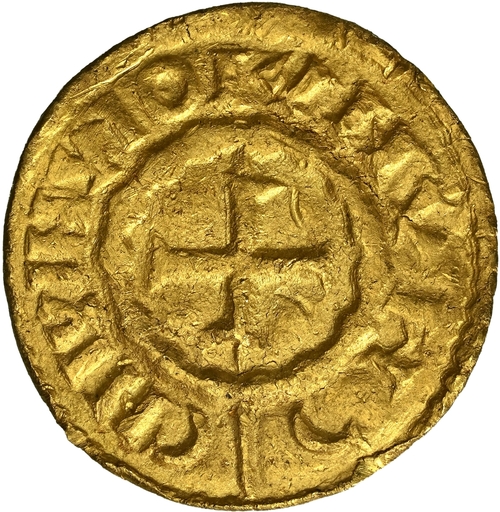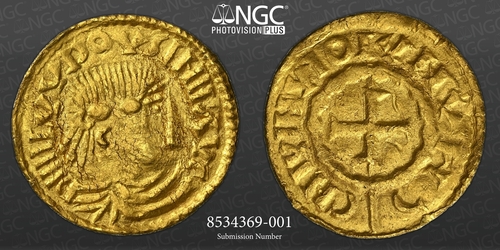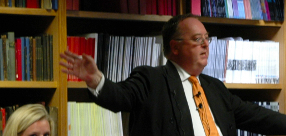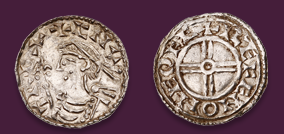Auction: 25005 - The Carrington and Pallas Collections of Exceptional English and Anglo-Gallic Gold Coins and Proof Sets
Lot: 554
(x) NGC AU | Anglo-Frisia, Gold Solidus, c. 825-850, imitating Louis the Pious , c. 816, D N LVVDOVS INII AVG, laureate and draped bust right with long vertical bar for nose, hair represented in fine lines and an inverted trefoil for eye, rev. NIVNIVIO IVNVM, suspended wreath containing a large cross pattée linked to wreath on vertical axis, 4.447g [68.62grns], 8h (Grierson, Group III -, cf. Prou 1075 different dies), of paler fabric but with a high gold content, with tiny excavation scuffs and stress marks in otherwise residually lustrous fields, a most pleasingly bold very fine, very rare, in NGC Black 'Carrington' holder, graded Almost Uncirculated (Cert. #8534369-001)
Provenance
The "Carrington" Collection of Exceptional English and Anglo-Gallic Gold Coins
Spink 197, 25 June 2009, lot 476 - £8,000
Found by C Noakes, near Salisbury (Wiltshire), March 2009
~ Recorded with the Fitzwilliam Museum (Cambridge), ref. EMC 2009.0157 ~
Whilst coinage in Northern Europe and England in the ninth century was predominantly silver there is substantial evidence for a smaller gold coinage. The majority of surviving gold coins from this period in Northern Europe are based on the gold Solidus struck by Louis the Pious c. 816 which was copied extensively in the North Sea area. Most surviving examples of these come from three hoards found in the Netherlands, however a small group, derive from the British Isles. This was the twelfth example to have been found in Britain. Of these seven, including this coin, are from locations within England. This find is therefore a further indication that these imitations of the Louis the Pious Solidus were probably in use alongside other gold coins, such as the famous Coenwulf Mancus (cf. Spink 170, lot 493), and silver pennies struck by Anglo Saxon rulers in ninth century England.
This piece and the Coenwulf Mancus have similar weights. Other complete examples all fall within a weight range 4.30g-4.56g, so it is conceivable that these also circulated as Mancuses. This is supported by the Mancus being tariffed at 30 silver Pennies (on a Gold to Silver ratio of 9:1), when an Anglo-Saxon Penny in the early 9th Century averaged 1.30g.
Within the English finds of imitation gold Solidi there is a cluster which share the same dies (Grierson Group XVI); lending credence to the idea of their production in England. A lead trial piece for an imitation Solidus at Torksey adds further evidence for there being English-manufactured imitations of the Louis the Pious Solidus. This coin has similarities to those in the English cluster of three but the execution of the wreath, bust and inscriptions are in better style. With the only similar coin, Grierson Group III, in the Bibliothèque Nationale in Paris (with no find provenance and from different dies), the case for this coin being struck in England is less sure, but this does remain a distinct possibility.
https://www.ngccoin.com/certlookup/8534369-001/NGCDetails/
Subject to 5% tax on Hammer Price in addition to 20% VAT on Buyer’s Premium.
Sold for
£9,000
Starting price
£4000

